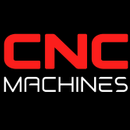Disadvantages of CNC Machining: What You Need to Know

Disadvantages of CNC Machining: What You Need to Know
Computer Numerical Control (CNC) machines have revolutionized modern manufacturing with unmatched precision, repeatability, and efficiency. But despite the advantages, CNC machining is not without its downsides. Whether you're a shop owner, manufacturing engineer, or procurement officer, understanding the disadvantages of CNC machining is essential for making informed decisions.
In this article, we’ll explore the key drawbacks of CNC machines, especially when compared to traditional manufacturing methods.
1. High Initial Cost
CNC machines require a significant upfront investment. Industrial-grade CNC mills, lathes, or routers can range from tens of thousands to hundreds of thousands of dollars. Beyond the machine itself, you also need to invest in:
- CAM software licenses
- High-precision cutting tools
- Training for operators and programmers
While CNC machines may offer cost savings long-term, the barrier to entry is steep for small shops or startups.
2. Skilled Labor Still Required
A common misconception is that CNC eliminates the need for skilled labor. In reality, you still need trained personnel to:
- Write and debug G-code or CAM programs
- Perform setup and tool changes
- Maintain and troubleshoot the machines
Hiring skilled CNC programmers or machinists can be expensive and competitive, especially in tight labor markets.
3. Limited to Certain Types of Production
CNC machining excels in low- to mid-volume runs of high-precision parts. However, for high-volume, low-cost parts, injection molding, casting, or stamping may offer better economies of scale. CNC is also less efficient for parts with extremely complex internal geometries that are better suited to additive manufacturing (3D printing).
4. Environmental and Energy Concerns
CNC machines typically consume significant amounts of electricity, especially during high-speed or heavy-duty machining. They also generate:
- Metal chips and scrap waste
- Coolant and lubricant disposal issues
- Noise and vibration in large-scale operations
Sustainability-conscious manufacturers may need to invest in additional systems to reduce CNC-related environmental impacts.
5. Dependency on Digital Systems
Because CNC relies on software, firmware, and computer control, any cybersecurity vulnerabilities, system failures, or bugs can halt production. Power outages, corrupted G-code files, or machine software crashes can be costly and difficult to diagnose quickly.
Additionally, frequent software updates or hardware incompatibilities can disrupt workflows.
6. Reduced Craftsmanship and Manual Skill
For industries that value manual craftsmanship, CNC machines can erode traditional skill sets. As shops digitize and automate more processes, there's less emphasis on manual techniques such as hand-finishing, custom fixturing, or creative problem-solving at the machine.
This can be seen as a loss of artisanal knowledge and may impact job satisfaction for experienced manual machinists.
7. Risk of Overengineering
CNC precision can lead engineers and designers to over-specify tolerances that aren't necessary. This results in:
- Increased machining time
- Higher tooling wear
- More expensive parts
When design-for-manufacturability (DFM) is not considered, CNC can actually reduce efficiency and profitability.
Conclusion: CNC Isn’t Perfect—But It’s Powerful
While CNC machining offers tremendous benefits in modern manufacturing, it’s not a one-size-fits-all solution. Its disadvantages—ranging from high costs to environmental concerns—should be weighed carefully based on your production needs, budget, and capabilities.
For the best outcomes, manufacturers should blend CNC with other fabrication methods and ensure teams are trained to maximize both human expertise and machine performance.


